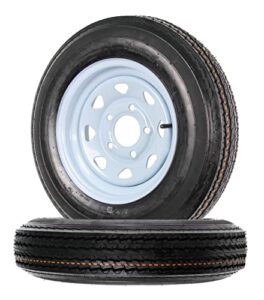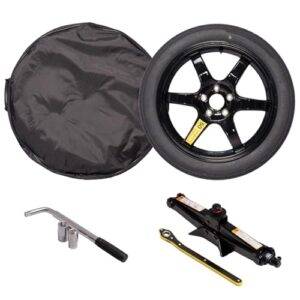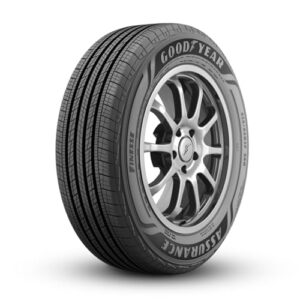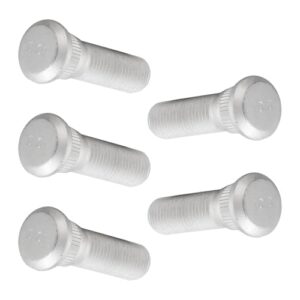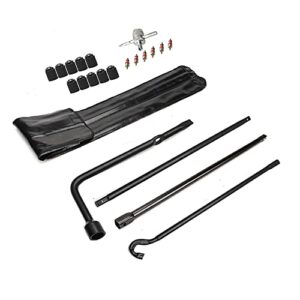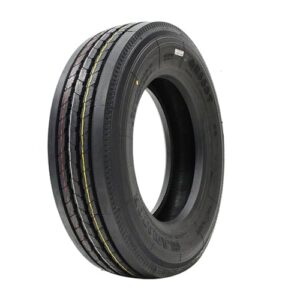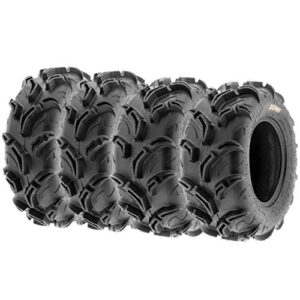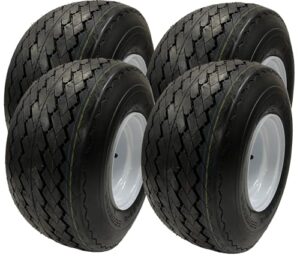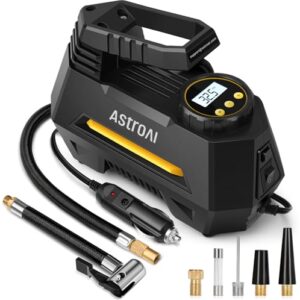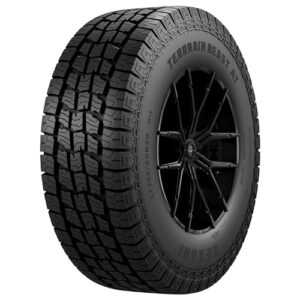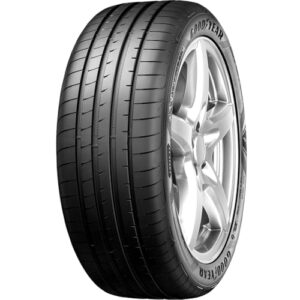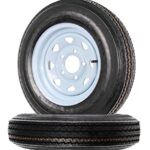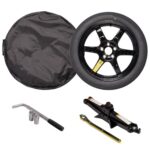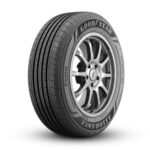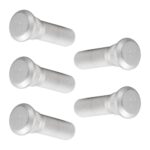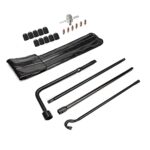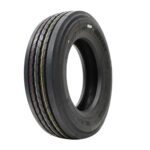To fix tire sidewall damage, replace the tire immediately. Repairing sidewall damage is unsafe and not recommended.
Tire sidewall damage poses significant safety risks. It compromises the structural integrity of the tire, leading to potential blowouts. Common causes include curb impacts, potholes, or sharp objects. Unlike tread damage, sidewall damage cannot be safely repaired. Driving on a damaged sidewall can result in accidents.
Therefore, quick and decisive action is crucial. Always inspect tires regularly and replace any with sidewall damage. This ensures your vehicle remains safe and reliable. Remember, proper tire maintenance extends tire life and increases road safety.

Identifying Sidewall Damage
Noticing damage on your tire’s sidewall can save you from accidents. Sidewall damage is serious and needs immediate attention. Learn how to spot the signs.
Signs Of Damage
Look for these common signs of sidewall damage:
- Cracks: Small lines or splits on the tire’s side.
- Bubbles: Bulging spots that indicate internal damage.
- Cuts: Visible slashes or gashes on the sidewall.
- Scrapes: Abrasions caused by hitting curbs.
Types Of Sidewall Issues
Understand the different types of sidewall issues:
| Type of Issue | Description |
|---|---|
| Cracking | Small lines that can grow over time. |
| Bulging | Indicates a weak spot due to internal damage. |
| Cuts and Punctures | Sharp objects can cause visible slashes. |
| Abrasion | Scrapes from curbs or rough terrain. |
Regularly inspect your tires to catch these issues early. Always address sidewall damage right away to stay safe on the road.

Causes Of Sidewall Damage
The sidewall of a tire is crucial for its performance and safety. Understanding the causes of sidewall damage can help prevent mishaps. Let’s dive into the common reasons and how you can prevent this damage.
Common Reasons
Sidewall damage can occur due to various factors. Here are the most frequent causes:
- Potholes: Driving over potholes can puncture or tear the sidewall.
- Curbs: Hitting curbs while parking or turning can damage the sidewall.
- Sharp Objects: Nails, glass, or other debris can pierce the sidewall.
- Overloading: Carrying too much weight can weaken the tire structure.
- Under-inflation: Low tire pressure causes excessive flexing, leading to damage.
Preventive Measures
Preventing sidewall damage is easier than fixing it. Follow these tips:
- Avoid Potholes: Drive carefully and avoid potholes when possible.
- Be Mindful of Curbs: Park and turn slowly to avoid hitting curbs.
- Inspect Tires Regularly: Check for sharp objects and remove them promptly.
- Monitor Tire Pressure: Keep your tires properly inflated to the recommended level.
- Do Not Overload: Stick to the manufacturer’s weight limits for your vehicle.
Assessing The Severity
Fixing tire sidewall damage starts with assessing the severity. Identifying the damage type is crucial. This helps determine the next steps. Knowing the difference between minor and major damage can save time and ensure safety.
Minor Vs Major Damage
Minor damage often includes small cuts or scratches. These may not cause immediate danger. You can usually handle minor damage yourself. Here are some common minor issues:
- Shallow cuts
- Surface scratches
- Small punctures
Major damage is more serious. It affects the tire’s structure. This type of damage requires professional help. Some examples of major damage include:
- Deep cuts
- Bulges or bubbles
- Large punctures
When To Seek Professional Help
Knowing when to seek professional help is essential. If you see major damage, consult a professional immediately. Driving on a damaged tire is dangerous. Here are signs to look for:
- Deep cuts or tears
- Large bubbles or bulges
- Significant loss of air pressure
Always prioritize safety. If unsure, consult a tire specialist. They will provide the best advice. Fixing tire sidewall damage is not always simple. A professional ensures the job is done right.
Temporary Fixes
Fixing tire sidewall damage can sometimes be urgent. Temporary fixes can help you get back on the road quickly. These fixes are not permanent but can provide a short-term solution.
Using Tire Sealants
Tire sealants can be very useful in emergency situations. They are easy to use and quick to apply. Here’s a simple guide on how to use them:
- Find the puncture or damage on the sidewall.
- Shake the sealant can well.
- Attach the sealant nozzle to the tire valve.
- Press the button to inject the sealant.
- Drive the car for a few miles. This distributes the sealant.
Important: Tire sealants are only a temporary fix. Seek professional help soon.
Patch Kits
Patch kits can also provide a quick fix for tire sidewall damage. These kits usually contain all you need to patch the tire. Follow these steps:
- Locate the damaged area on the sidewall.
- Clean the area around the damage.
- Sand the surface to make it rough.
- Apply the adhesive from the patch kit.
- Place the patch over the adhesive.
- Press down firmly to secure the patch.
Note: Patch kits offer a temporary solution. Always replace or repair the tire professionally.
Permanent Solutions
Tire sidewall damage can be a serious issue. Temporary fixes are not always reliable. For a lasting fix, permanent solutions are essential. Below, we explore two key approaches.
Replacing The Tire
One sure way to address sidewall damage is to replace the tire. This ensures safety and reliability. Here are the steps to follow:
- Inspect the damage: Check the sidewall carefully.
- Purchase a new tire: Buy a tire that matches your vehicle’s specifications.
- Remove the damaged tire: Use a jack to lift the car. Remove the lug nuts and take off the tire.
- Install the new tire: Place the new tire on the hub. Tighten the lug nuts securely.
- Lower the car: Use the jack to lower the car back to the ground.
- Test the tire: Drive slowly to ensure the tire is properly installed.
Professional Repair Techniques
Sometimes, a professional repair can save your tire. Here are common professional techniques:
- Patch and Plug: A patch and plug can seal small punctures. This method requires special tools and skills.
- Sidewall Reinforcement: Some shops offer sidewall reinforcement. They add extra layers to strengthen the damaged area.
- Vulcanizing: Vulcanizing can repair larger sidewall damage. It involves heating the rubber to bond it.
Professional repairs can be cost-effective. Ensure you choose a reputable service provider.
Diy Repair Steps
Fixing tire sidewall damage yourself can save time and money. Follow these DIY repair steps to get back on the road safely.
Required Tools
- Tire repair kit
- Rubber cement
- Tire plug
- Air compressor
- Jack and lug wrench
- Soap and water
Step-by-step Guide
- Locate the damage: Inspect the tire sidewall for any visible damage.
- Remove the tire: Use the jack and lug wrench to remove the tire.
- Clean the area: Use soap and water to clean the damaged area.
- Apply rubber cement: Apply a generous amount of rubber cement to the damaged area.
- Insert tire plug: Push the tire plug into the hole using the tool from the repair kit.
- Let it dry: Allow the rubber cement to dry for at least 30 minutes.
- Reinflate the tire: Use the air compressor to inflate the tire to the recommended pressure.
- Reinstall the tire: Reattach the tire to the vehicle using the lug wrench.
- Check for leaks: Spray the repaired area with soapy water and look for bubbles.
By following these steps, you can effectively repair tire sidewall damage. Ensure the repair holds by regularly checking your tire pressure.
Safety Considerations
Fixing tire sidewall damage requires attention to safety. It’s essential to understand the risks and measures to ensure road safety.
Risks Of Diy Repairs
Attempting to fix tire sidewall damage on your own can be dangerous. Here are some risks to consider:
- Incomplete Repair: DIY repairs may not fully fix the damage, leading to potential tire failure.
- Injury Risk: Improper handling of tools can cause injuries.
- Warranty Void: Unauthorized repairs may void your tire’s warranty.
Ensuring Road Safety
Ensuring road safety is crucial after fixing tire sidewall damage. Follow these steps:
- Inspect Regularly: Check the tire condition frequently to spot any issues early.
- Use Professional Services: Always prefer professional tire repair services for major damage.
- Follow Manufacturer Guidelines: Adhere to the manufacturer’s recommendations for tire maintenance.
Here’s a quick comparison of DIY vs Professional Repair:
| Aspect | DIY Repair | Professional Repair |
|---|---|---|
| Cost | Lower | Higher |
| Safety | Risky | Safe |
| Effectiveness | Variable | High |
Maintaining Tire Health
Maintaining tire health is crucial for your vehicle’s performance and safety. It’s important to regularly check and care for your tires to avoid any damage. Damaged tires can lead to accidents and costly repairs. Two main practices can help keep your tires in good shape: regular inspections and proper inflation. These practices ensure your tires last longer and perform better.
Regular Inspections
Regular tire inspections help identify damage early. Inspect your tires at least once a month. Look for cuts, punctures, and bulges on the sidewalls. If you find any damage, have a professional check it immediately.
Use a flashlight to inspect hard-to-see areas. Check the tread depth using a penny. Insert the penny into the tread with Lincoln’s head facing down. If you can see all of Lincoln’s head, the tread is too worn.
Keep an eye out for any unusual wear patterns. Uneven wear can indicate alignment or suspension issues. Fix these problems quickly to prevent further tire damage.
Proper Inflation
Proper tire inflation is key to maintaining tire health. Under-inflated or over-inflated tires can cause problems. Always use a reliable tire pressure gauge to check your tire pressure.
Check the tire pressure when the tires are cold. The recommended pressure is usually found in the vehicle’s manual or on a sticker inside the driver’s door.
Inflate your tires to the recommended levels. Do not rely on visual checks alone. A tire can look fine but still be improperly inflated.
Over-inflated tires can cause a rough ride and increase wear in the center of the tread. Under-inflated tires can overheat and wear out the edges faster.
Here is a quick reference table for proper tire maintenance:
| Maintenance Task | Frequency | Tools Needed |
|---|---|---|
| Visual Inspection | Monthly | Flashlight |
| Tread Depth Check | Monthly | Penny |
| Pressure Check | Monthly | Tire Pressure Gauge |
By following these steps, you can maintain your tire health. This will help you avoid sidewall damage and keep your vehicle running smoothly.

Frequently Asked Questions
Can The Sidewall Of A Tire Be Repaired?
No, you cannot repair the sidewall of a tire. It’s unsafe and weakens the tire’s structure. Always replace damaged sidewalls.
Can You Drive On A Tire With Sidewall Damage?
No, driving on a tire with sidewall damage is unsafe. It can lead to a blowout. Replace the tire immediately.
Can Tyre Wall Damage Be Repaired?
Tyre wall damage is usually irreparable. Damaged sidewalls can compromise safety. Replace the tyre to ensure optimal performance and safety.
How To Fix Chip In Tire Sidewall?
Replace the tire immediately. Chips in the sidewall compromise safety. Visit a professional tire service for proper assessment.
Conclusion
Fixing tire sidewall damage is crucial for safe driving. Always inspect your tires regularly for any signs of wear. Consult a professional if you notice any damage. Proper tire maintenance can save you time and money. Prioritize safety by addressing tire issues promptly and ensuring a smooth, safe ride.




